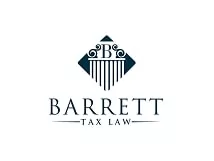By Dale Barrett – Managing Partner at Barrett Tax Law, Founder of Lawyers & Lattes Legal Cafe, Author of Tax Survival for Canadians: Stand up to the CRA, Editor of the Family Law and Tax Handbook, and Tax Columnist at the Lawyer's Daily. Originally published by The Lawyer's Daily.
Unlike a superior court, which can make an equitable decision — a decision based on fairness — the Tax Court of Canada is not a court of equity. It must apply the law and the facts and arrive at a decision that the judge believes to be a correct application of the law to the facts. It's a one-size-fits-all approach. It's consistent. And although not equitable to a particular taxpayer, the law is typically applied equally between them. It's designed this way.
The judge of the Tax Court does not have the discretion to decrease the gross negligence penalty from 50 per cent to 20 per cent to be fair, nor does he or she have the discretion to vary a tax in order to make it more affordable for the taxpayer. Regardless of how the judge may feel, he or she must apply the law consistently and by the book.
The Tax Court of Canada is a great equalizer. It allows taxpayers to have their case heard before an impartial judge (as long as the taxpayer can afford representation) who will apply the law consistently — regardless of whether they are rich or poor.
Outside the four walls of the court, however, there is an inequality hiding in plain sight.
According to a report by The Fifth Estate that was posted on May 30, the Canada Revenue Agency (CRA) allegedly had signed a "secret settlement with wealthy KPMG clients involved in [an] offshore tax scheme."
With this report, it has become abundantly clear that taxpayers from different ends of the socioeconomic spectrum do not receive equal treatment at the CRA level. Aside from the fact that taxpayers on different ends of the spectrum have disparate access to legal resources (which may affect their outcome at trial), only select taxpayers seem to be signing the kind of settlements that wealthy taxpayers appear to have been signing with the CRA. And while we really don't know the specifics of the alleged settlements negotiated by the taxpayers and KPMG because of the secretive nature of the agreements, the actual contents are immaterial. What is material is the notion that secret settlements were signed in the first place. And I imagine that regardless of the details, the taxpayers involved were not ruined, which is something that cannot be said of those involved in the Fiscal Arbitrators tax scheme (a widely read decision that can be found at Torres v. Canada 2013 T.C.J. No. 332), for example.
To underscore the very different treatment that the average taxpayer receives from the system compared to the treatment received by a wealthy taxpayer, for example, consider two hypothetical (yet characteristic) representative participants in two different tax schemes. The first hypothetical taxpayer is a wealthy client involved in a scheme promoted by a big accounting firm. The general fact patterns between the scenarios are similar in broad strokes. The outcomes are not.
The Wealthy Client
The wealthy client is an individual with a $300 million net worth. They knowingly participated in a scheme. Being a sophisticated businessperson, the taxpayer had advisers, lawyers, accountants and other professionals available to provide guidance and had access to a second opinion on the scheme.
Due to their experience and the abundance of knowledge and advice available to them, the taxpayer should have had at least some reason to believe that the scheme may be illegal or, in the alternative, that the transaction was subject to a certain amount of risk. The taxpayer sought to obtain millions of dollars in tax savings and paid fees to a big-name firm to participate in the scheme.
The CRA claimed that this scheme was masking actual income and was a sham. The taxpayer signed a secret settlement with the CRA.
Participation in the big scheme to try to save millions of dollars of tax per year has likely not ruined the taxpayer. They are still tremendously wealthy; a gamble just didn't pay off as they'd hoped.
This is part one of a two-part series. Part two will consider another hypothetical taxpayer: a typical client of Fiscal Arbitrators.
Originally Published On The Lawyer's Daily
The content of this article is intended to provide a general guide to the subject matter. Specialist advice should be sought about your specific circumstances.

